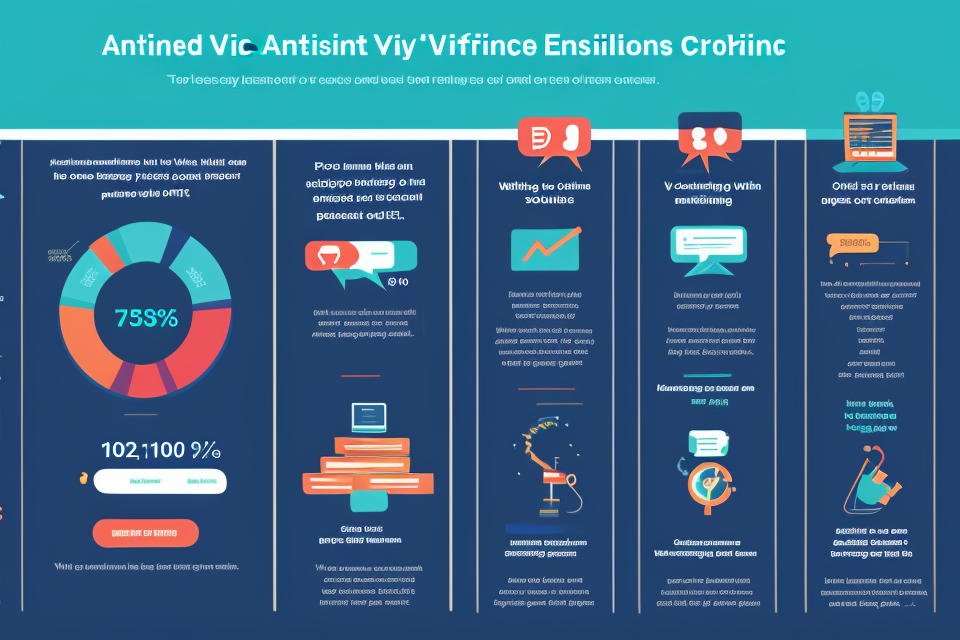
In recent times, online courses have gained immense popularity as a mode of education. However, there are still many who prefer the traditional face-to-face learning method. While there are several advantages of face-to-face learning, there are also some disadvantages that cannot be ignored. In this article, we will explore the drawbacks of face-to-face learning and why online courses might be a better option for some learners. From lack of flexibility to limited access to resources, we will cover it all. So, let’s dive in and explore the other side of education.
The Pros and Cons of Face-to-Face Learning
Pros of Face-to-Face Learning
One of the primary advantages of face-to-face learning is the interaction with peers and instructors. Being in the same physical space as others allows for spontaneous conversations and discussions that can deepen understanding and spark new ideas. This type of social learning is difficult to replicate in an online environment, where interactions are often more structured and formal.
Another advantage of face-to-face learning is the immediate feedback that is possible. When students are in the same room as their instructors, they can ask questions and receive answers on the spot. This type of real-time feedback is essential for many students, as it helps them to better understand the material and to identify areas where they need additional support.
In addition to immediate feedback, face-to-face learning also provides a higher level of accountability. When students are in a physical classroom, they are more likely to stay focused and engaged in the material. They are also more likely to take notes and participate in class discussions, which can help them to retain information and to apply it in new contexts. This type of accountability is difficult to replicate in an online environment, where students may be more likely to multitask or to disengage from the material.
Cons of Face-to-Face Learning
One of the main disadvantages of face-to-face learning is the limited flexibility it offers. This is particularly true for students who have other commitments, such as work or family responsibilities, as they may find it difficult to attend classes at the times they are scheduled. This can be especially challenging for students who live far away from their schools or who have mobility issues that make it difficult for them to get to class.
Another disadvantage of face-to-face learning is attendance and time management issues. Attendance is mandatory in traditional classroom settings, and students who miss classes risk falling behind on their coursework. In addition, the pace of traditional classroom learning can be fast, and students who struggle to keep up may find it difficult to catch up later.
Limited access to resources is another disadvantage of face-to-face learning. In traditional classroom settings, students may not have access to the same level of technology and resources as they would in an online course. This can be particularly challenging for students who are interested in pursuing fields that require specialized software or equipment, as they may not have access to these resources outside of class.
In addition, traditional classroom settings can be limiting for students who are more visual or hands-on learners. In an online course, students can often access a wide range of multimedia resources, such as videos, images, and interactive simulations, which can help them better understand the material. In a traditional classroom setting, however, students may have limited access to these resources, which can make it more difficult for them to grasp certain concepts.
Overall, while face-to-face learning has many benefits, it is important to consider these potential disadvantages when deciding whether it is the right option for you. If you have other commitments or mobility issues, or if you prefer a more flexible learning environment, an online course may be a better option for you.
Online Courses: An Alternative to Traditional Education
Types of Online Courses
When it comes to online courses, there are several types available to students. Each type has its own unique features and benefits, making it important to understand the differences between them. Here are three common types of online courses:
MOOCs
Massive Open Online Courses (MOOCs) are a type of online course that is available to anyone with an internet connection. These courses are typically offered by universities and other educational institutions and cover a wide range of topics. MOOCs are designed to be self-paced, which means that students can complete the course on their own schedule.
One of the main advantages of MOOCs is that they are often free or low-cost, making them accessible to students who may not have the financial resources to attend traditional college courses. Additionally, MOOCs are often led by experienced instructors and feature high-quality course materials, such as videos, readings, and quizzes.
However, one disadvantage of MOOCs is that they can be very time-consuming. Since they are self-paced, students must be motivated to complete the course on their own without the structure of in-person classes. Additionally, MOOCs often do not offer the same level of interaction and support as traditional college courses, which can make it difficult for students to ask questions or get help when needed.
Self-paced courses
Self-paced courses are another type of online course that allows students to complete the coursework on their own schedule. These courses are typically offered by educational institutions and businesses and can cover a wide range of topics.
One advantage of self-paced courses is that they are very flexible, allowing students to work at their own pace and on their own schedule. This can be especially helpful for students who have other commitments, such as work or family obligations, that make it difficult to attend traditional college courses.
However, one disadvantage of self-paced courses is that they can be very isolating. Since students are working on their own, they do not have the opportunity to interact with other students or instructors in the same way that they would in a traditional college course. This can make it difficult to get help or support when needed.
Interactive courses
Interactive courses are a type of online course that emphasizes collaboration and interaction between students and instructors. These courses often use video conferencing, discussion boards, and other tools to facilitate communication and collaboration.
One advantage of interactive courses is that they provide a more structured and interactive learning experience than self-paced courses. Students have the opportunity to interact with instructors and other students, which can help to build a sense of community and support.
However, one disadvantage of interactive courses is that they can be time-consuming and require a significant amount of self-discipline. Students must be able to manage their time effectively and be self-motivated in order to complete the coursework on schedule. Additionally, some students may find it difficult to adjust to the online format, which can be very different from traditional college courses.
Benefits of Online Courses
One of the primary advantages of online courses is the flexibility they offer. With online courses, students can learn at their own pace and on their own schedule. This is particularly beneficial for individuals who have other commitments, such as work or family obligations, that make it difficult to attend traditional in-person classes.
Another benefit of online courses is access to resources. Online courses often include a variety of resources, such as videos, podcasts, and interactive simulations, that can help students better understand the material. These resources can be accessed at any time, allowing students to review the material as often as needed.
Online courses also offer the benefit of self-paced learning. This means that students can learn at their own pace, rather than being tied to the pace of the class. This can be particularly beneficial for students who may struggle with certain concepts, as they can take the time they need to fully understand the material.
In addition to these benefits, online courses also offer interaction with peers and instructors. This interaction can take place through online discussion boards, email, and other forms of communication. This allows students to ask questions and get feedback from their instructors and peers, which can be particularly beneficial for students who may not feel comfortable asking questions in a traditional classroom setting.
The Disadvantages of Online Courses
Technical Issues
While online courses offer numerous benefits, technical issues can be a significant disadvantage. These issues can hinder the learning experience and affect the overall quality of the course. Some of the most common technical issues include:
- Limited internet connectivity: One of the most significant barriers to online learning is limited internet connectivity. Students who live in areas with poor internet connectivity may experience slow download and upload speeds, making it difficult to access course materials or participate in online discussions. In some cases, students may not have access to the internet at all, which can be a significant obstacle to online learning.
- Insufficient hardware or software: Another technical issue that can affect online learning is insufficient hardware or software. Students need access to a computer or mobile device that meets the minimum requirements for the course. This can be a challenge for students who do not have access to a computer or whose devices are not powerful enough to handle the demands of the course. Additionally, students may need access to specific software or applications that are not available on their devices, which can create additional challenges.
- Technical support: Even with the right hardware and software, technical issues can still arise. Students may encounter technical difficulties such as software crashes, frozen screens, or other issues that can disrupt the learning experience. While many online courses offer technical support, students may still experience delays or difficulties in getting the help they need. This can be particularly challenging for students who are not familiar with technology or who are not comfortable seeking help.
Overall, technical issues can be a significant disadvantage of online learning. While these issues can be overcome with the right resources and support, they can still hinder the learning experience and affect the overall quality of the course.
Self-Motivation
One of the major drawbacks of online courses is the lack of self-motivation among students. When learning in a traditional classroom setting, students are often motivated by the presence of their peers and the instructor. However, in an online course, students are left to their own devices and must be self-motivated to succeed.
One of the biggest challenges with self-motivation in online courses is the lack of accountability. Without the presence of a teacher or fellow students, it can be easy for students to put off assignments or skip class altogether. This lack of accountability can lead to a lack of discipline and can make it difficult for students to stay on track with their coursework.
Another challenge with self-motivation in online courses is time management. Students must be able to manage their time effectively to complete assignments and participate in online discussions. This can be particularly difficult for students who are not used to working independently or who have other commitments that can interfere with their coursework.
Finally, self-discipline is also a crucial aspect of online learning. Students must be able to discipline themselves to stay on track with their coursework and to complete assignments on time. This can be challenging for students who are not used to working independently or who have other distractions that can interfere with their studies.
Overall, the lack of self-motivation can be a significant barrier to success in online courses. Students must be able to motivate themselves to stay on track with their coursework and to complete assignments on time. This requires a high level of discipline and time management skills, which can be difficult for some students to develop.
Limited Interaction
One of the primary disadvantages of online courses is the limited interaction with peers and instructors. Unlike traditional face-to-face learning, online courses lack the opportunity for spontaneous conversations and discussions that can take place in a physical classroom. As a result, students may find it difficult to form relationships with their peers and instructors, which can impact their overall learning experience.
Additionally, online courses often lack immediate feedback, which can make it challenging for students to gauge their progress and understanding of the material. Without the opportunity to ask questions or receive immediate feedback, students may struggle to keep up with the pace of the course or feel uncertain about their comprehension of the material. This lack of interaction can also make it difficult for instructors to identify and address potential learning challenges or misunderstandings in a timely manner.
FAQs
1. What are the disadvantages of face-to-face learning?
Answer:
There are several disadvantages of face-to-face learning, including:
* Time constraints: Attending classes in person requires a set schedule and can be difficult to manage for those with other commitments.
* Limited accessibility: Some students may not have access to a physical classroom or may live far away from the school, making it difficult to attend in person.
* Cost: In-person courses can be more expensive than online courses due to the costs of facilities, materials, and transportation.
* Interaction limitations: In-person courses often have limited opportunities for interaction and collaboration between students, which can hinder learning.
* Health risks: During a pandemic or other health crisis, in-person learning can pose a risk to students and teachers alike.
2. How does online learning compare to face-to-face learning?
Online learning offers several advantages over face-to-face learning, including:
* Flexibility: Online courses can be accessed from anywhere with an internet connection, making it easier for students to fit their studies into their schedules.
* Accessibility: Online courses are often more accessible for students who may not have access to a physical classroom or who live far away from the school.
* Cost: Online courses are often less expensive than in-person courses due to lower facility and transportation costs.
* Interaction and collaboration: Online courses often offer more opportunities for interaction and collaboration between students, which can enhance the learning experience.
* Health safety: Online learning eliminates the risk of exposure to health risks such as COVID-19 that are associated with in-person learning.
3. Are online courses as effective as face-to-face courses?
Online courses can be just as effective as face-to-face courses, depending on the design and implementation of the course. Some studies have shown that online courses can be more effective than face-to-face courses in certain contexts, such as when students have access to technology and resources that support online learning. However, it is important to note that online courses require a different set of skills and strategies than face-to-face courses, and not all students may be able to adapt to this format. Ultimately, the effectiveness of a course depends on the quality of the instruction, the level of student engagement, and the learning goals and objectives.


